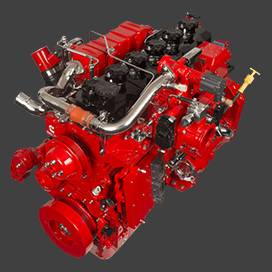Ago . 11, 2024 11:32 Back to list
Identify the issues related to brake drums and distinguish what does not qualify as a problem
Understanding Brake Drums Common Issues and Misconceptions
Brake drums are a critical component of many vehicles’ braking systems, especially in older models and larger vehicles like trucks and SUVs. They serve as part of the drum brake system, where the brake shoes push against the inside of a spinning drum to create friction and stop the vehicle. Like any mechanical component, brake drums can experience a variety of issues over time due to wear and tear, but it’s equally important to differentiate between genuine problems and common misconceptions.
Understanding Brake Drums Common Issues and Misconceptions
Another significant problem is the accumulation of dust and debris. Brake drum systems generate a considerable amount of friction material, which wears off both the brake shoes and the drum surface. Over time, this dust can accumulate and affect the performance of the braking system. To maintain optimal braking power, it is essential to keep the drums clean and free of friction material buildup, which can lead to decreased braking performance and potentially more severe issues.
which of these is not a problem with brake drums

Cracks in the brake drum represent another serious concern. These can occur due to thermal cycling—repeated heating and cooling—or as a result of excessive stress and overuse. Cracked drums can compromise the safety of the braking system, as they may fail under pressure. Inspecting the drums for any signs of cracking is crucial, particularly if the vehicle experiences frequent heavy loads or the driver often engages in aggressive braking maneuvers. Regular maintenance can catch these problems before they lead to brake failure.
However, not all perceived problems with brake drums stem from their condition. A common misconception is that noisy brakes automatically indicate an issue with the brake drums. While excessive noise can indeed signify a problem, it may also result from other components, such as worn brake shoes or improperly adjusted brakes. Therefore, attributing all braking noise directly to the brake drums can lead to unnecessary repairs and expenditures.
Additionally, people often confuse issues with brake drums with problems associated with brake rotors. While drum brakes and disc brakes operate under similar principles, their components and failure modes can differ significantly. Signs such as pulsating brakes, for instance, are typically associated with warped rotors rather than drums. Understanding these distinctions is vital for effective maintenance and repair.
In conclusion, while there are several genuine problems associated with brake drums—such as warping, accumulation of dust and debris, and cracking—not every braking issue can be attributed to them. Noise and performance problems can arise from multiple sources, emphasizing the importance of a thorough inspection and understanding of the entire braking system. Regular maintenance is essential for safety and performance, as is recognizing the nuances of brake drum operation. By staying informed and vigilant, drivers can ensure their vehicles remain safe and efficient on the road.
-
Brake Drum Man - High-Quality Drum Brake Drums & Brake Shoes for Reliable Performance
NewsJun.24,2025
-
High-Quality Brake Drum Kamaz – Durable Drum Brake Drum & Brake Shoe Replacement
NewsJun.10,2025
-
High-Quality Brake Drum Liza for Drum Brake Systems - Superior Durability and Performance
NewsJun.10,2025
-
High-Quality Brake Drum Kamaz – Durable Drum Brake Drum & Brake Shoe Solutions
NewsJun.10,2025
-
Durable Kamaz Brake Drums High-Performance Truck Parts
NewsJun.09,2025
-
Premium Brake Drum Maz Kit with Shoes Enhanced Braking
NewsJun.09,2025
